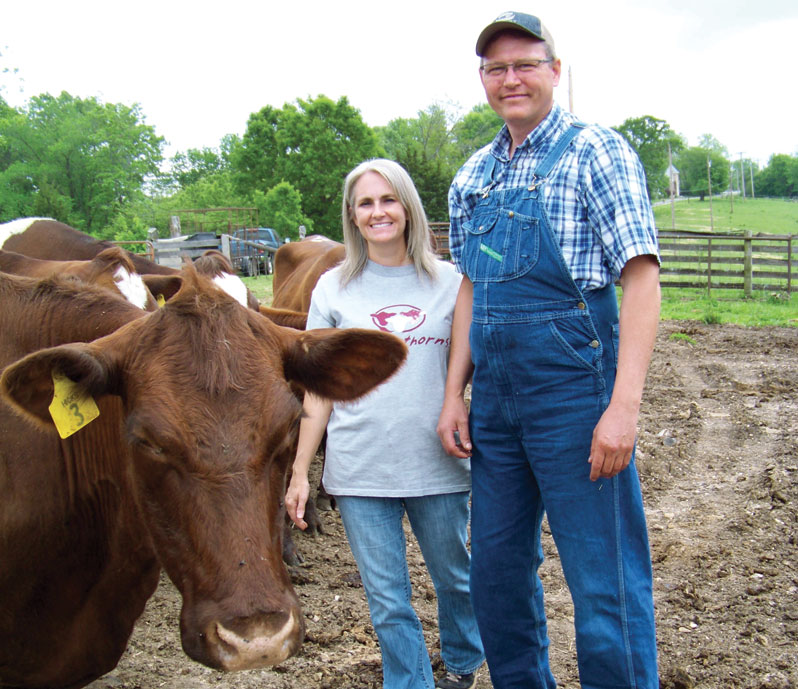As some old timers would say, the Joe and Christy Hicks’ Milking Shorthorn operation in Chadwick, Mo., “is one of the smaller spreads.” Six registered cows and their calves comprise the herd, and that’s just fine with the couple for now.
When Joe retires from the U.S. Department of Agriculture as a consumer safety inspector at the Tyson plant in Monett, Mo., and Christy as a social studies teacher in the Chadwick, Mo., school system, they hope to grow the herd to 20 registered cows.
The couple became interested in Milking Shorthorns because their three kids drank a lot of milk. They settled on Milking Shorthorns because they are dual purpose. The cows give plenty of milk, with butterfat content higher than a Holstein, but less than a Jersey, yet still enough for making butter. Steers are sold as beef.
The breed also has a low somatic cell count, indicating resistance to mastitis. Joe and Christy have had only one incident, probably from a uterine infection that affected the mammary through the lymphatic system, according to a veterinarian. Likewise with calving, they’ve only had to pull one calf, and in another case, a heifer birthed a 90- to 100-pound calf with no problems.
They also can vouch for the docility of the breed. Joe relates how while working in Noel, Mo., at a chicken plant, one of their heifers calved.
“I told Christy she would have to milk her, even though she hadn’t milked anything in her life. I simply couldn’t leave Noel,” he said. Through some coaching by phone, Christy got the job done.
“She never kicked or even twitched,” said Christy.
The couple bought their first two heifers, which they still have, in October 2007. Joe handles the breeding by artificial insemination, using native semen that can be traced back to the original stock in England.
“It’s hard to come by,” Joe noted. “We have several bulls in the tank to choose from.”
The herd, whose names are Dyna, Contessa, Belle, Annie, QT Pi and Blossom, each have nursing calves that will be weaned at about 7 months.
Joe and Christy, along with their daughter and twin sons, milk the cows on a makeshift stool in the pasture or lot only when they need the milk. That could be every few days, once a week or longer. Otherwise, the calves get the milk.
“Each kid has at least one cow. … It’s been a good learning experience for them,” said Christy. “Whatever the weather, you have to feed and water and check on them. They learned that something else relies on them.”
The herd pastures on about 20 acres, part of a larger farm owned by Joe’s uncle that was part of the Luken Ranch. They live in the 1883 house and help with haying and other chores on the larger farm.
“We don’t plant anything special,” said Joe. “The grass is a mix of fescue, orchard grass and clover, and we bale whatever grows there. We feed very small amounts of grain to keep expenses to a bare minimum.” Pointing to the herd, he added, “You can see some of them are very fat.”
Whenever they do retire and have that slightly bigger herd, Joe and Christy plan to keep it simple. Like his grandpa, who got by with a handful of milk cows, some beef cows and hogs, Joe said, “If a guy can just be comfortable and eat well, what more do you need?”








